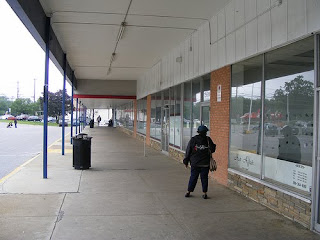 It’s nice to be proven right. I make a lot of predictions on this blog but most will not be proven right or wrong for many years, by which time everyone (including, probably, me) will have forgotten I ever made them. But once in a while a prediction comes true within my gnat-like memory span, allowing me an opportunity to gloat.
It’s nice to be proven right. I make a lot of predictions on this blog but most will not be proven right or wrong for many years, by which time everyone (including, probably, me) will have forgotten I ever made them. But once in a while a prediction comes true within my gnat-like memory span, allowing me an opportunity to gloat.
Such is the case with the news reported by the Wall Street Journal that malls in the nation’s largest 80 metro areas hit their highest vacancy rates since 1990 in the first quarter of 2011, and could reach 11% later this year for strip malls and regional shopping centers. Now, I was hardly the only one to observe that the recession would severely impair retail sales and put a dent in retail vacancies, so I cannot claim any special prescience on that score. But only a few observers of the retail scene (Ed Risse was another) went out on a limb and predicted that the vacancies would hit hardest on the metropolitan periphery.
Lo and behold, the Journal reports:
A broader glut has struck some of the exurbs that saw heavy housing development during the boom, where malls and strip centers built for growth that never came. More than one billion square feet of retail space was added in the 54 largest U.S. markets since the start of 2000, according to CoStar Group’s Property & Portfolio Research Inc. of Boston.
What the Journal article does not do is explain why this is happening. The reason for rising vacancies nationally is the demise of Mass OverConsumption. The consumer bubble has burst. Consumer spending will be very slow to recover as households deleverage and Boomers start saving for retirement. With consumers buying less, the retail sector will need fewer stores.
The reason that projects on the metro periphery are suffering more than other areas is that “suburban sprawl” (scattered, disconnected, low-density development) is receding. When Americans have choices, they tend to avoid the residential monoculture, strip malls and long commutes of the periphery in favor of walkable, mixed use communities closer to their jobs in the urban core. Thus growth in population and consumer demand never materialize. Stores close and vacancies rise. Just wait until gasoline prices pass $4 per gallon (and $5 per gallon later in the business cycle) — economics on the suburban edge will look even uglier.
So, why does this matter? Because public policy has not caught up with economic reality. Our zoning and transportation policies are still geared to the era of MassOverconsumption, when development pushed relentlessly outwards from the urban core during the post-World War II era. That epoch is over. The forces that propelled outward growth have spent themselves.
I hope to develop these themes in future posts.


